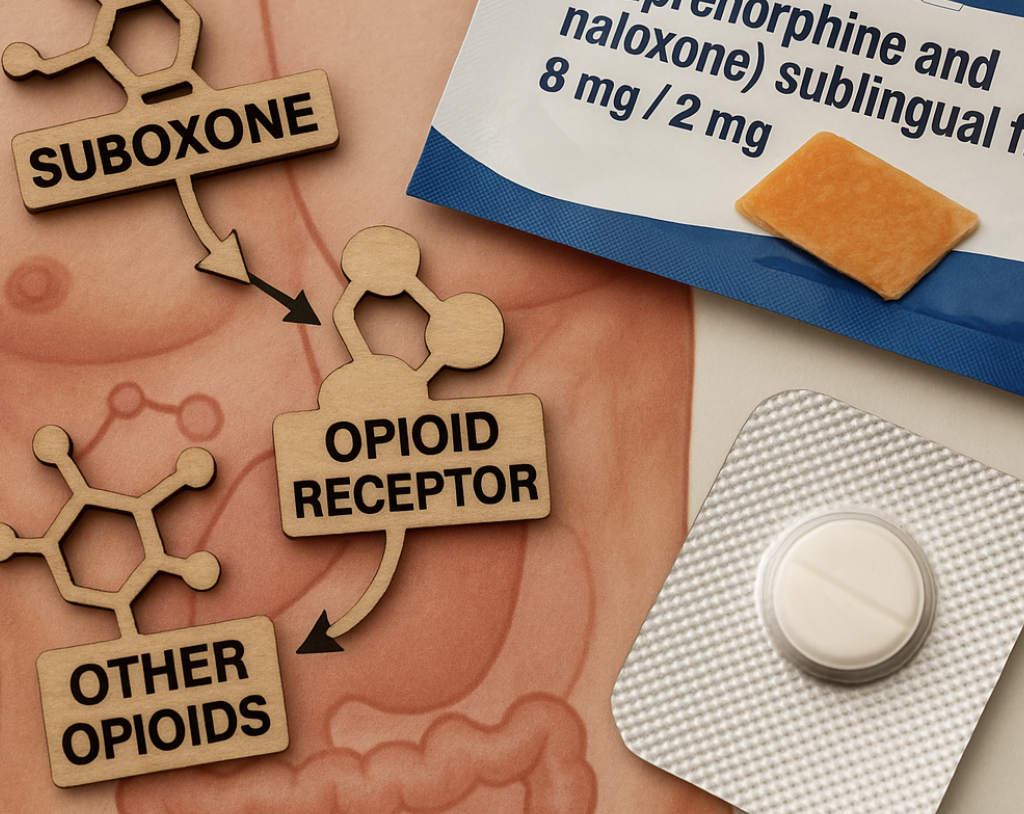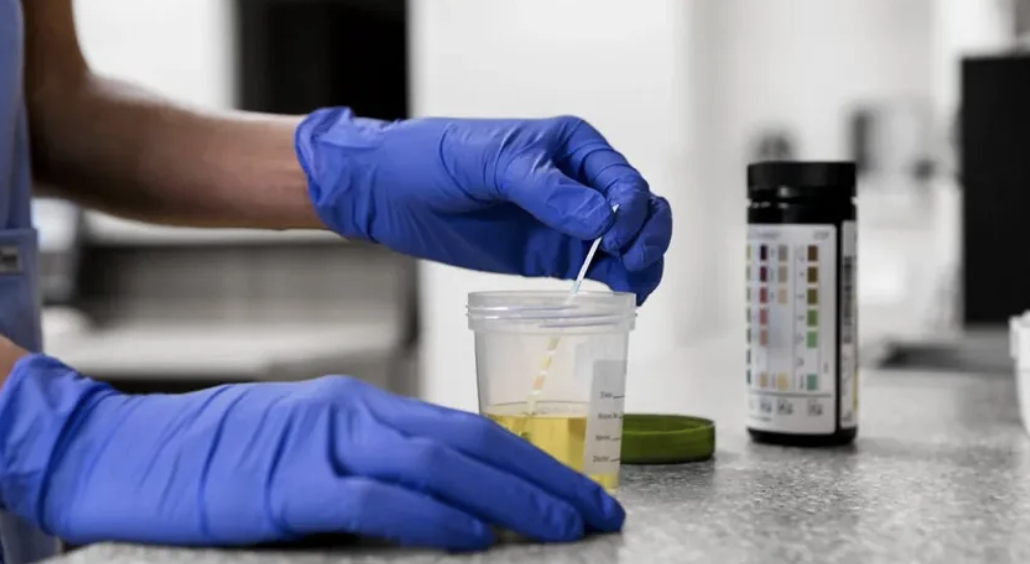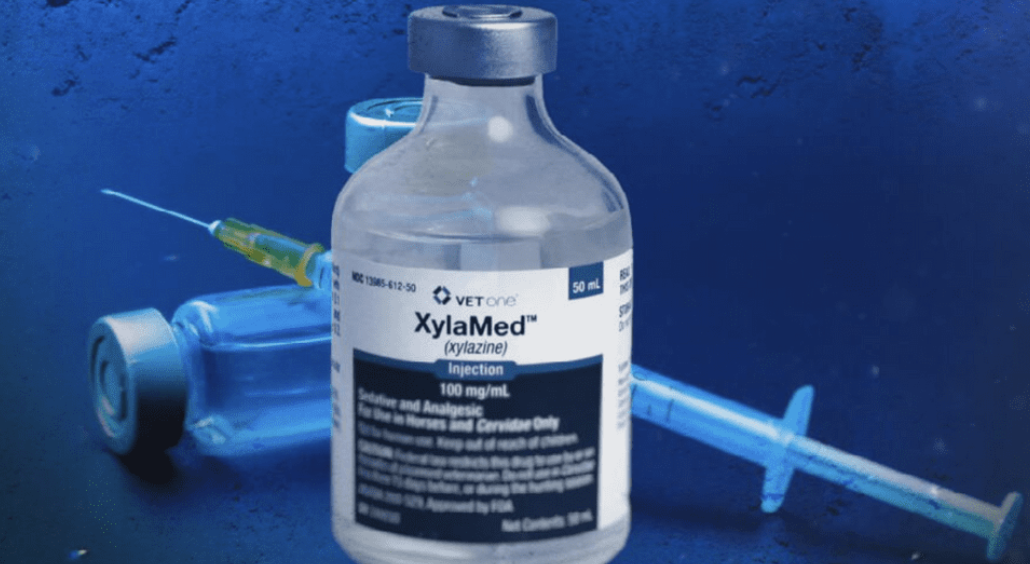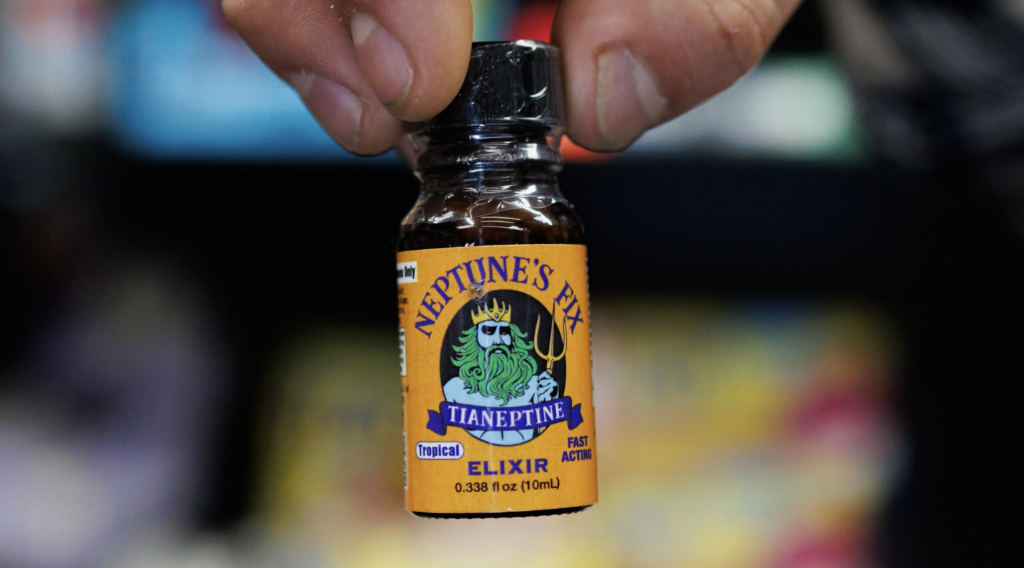How Long Does Suboxone Block Opiates? Find Out Timelines & Effects
Suboxone blocks opiates for about 24 to 72 hours per dose. This article explains how Suboxone works, how long suboxone blocks opiates, what affects its blocking duration, and what to expect during treatment.
Key Takeaways
- Suboxone effectively blocks opiates for 24 to 72 hours per dose, influenced by factors such as dosage, metabolism, and treatment history.
- Buprenorphine’s high binding affinity and long half-life contribute to its blocking effect, making it difficult for other opioids to exert their effects when Suboxone is taken as prescribed.
- It is crucial to wait 12 to 48 hours after using other opioids before starting Suboxone to avoid precipitated withdrawal, highlighting the importance of medical guidance in treatment.
What is Suboxone, and how does it work?
Suboxone buprenorphine is a combination medication consisting of buprenorphine and naloxone. Buprenorphine, a partial opioid agonist, binds tightly to opioid receptors in the brain, producing mild opioid effects and blocking other opioids from attaching to these receptors. Naloxone, an opioid antagonist, is included to prevent misuse by injection.
In opioid addiction treatment, Suboxone serves as a cornerstone of medication-assisted treatment (MAT), helping to manage withdrawal symptoms and reduce cravings. The high affinity of buprenorphine for opioid receptors means it can effectively block the effects of full opioid agonists like heroin and morphine while providing enough opioid effect to prevent withdrawal, acting as a partial agonist to treat opioid dependence.
The unique combination of buprenorphine and naloxone in Suboxone helps to mitigate the risk of misuse and offers a balanced approach to treating opioid addiction. Understanding how Suboxone works allows patients and caregivers to better appreciate its role in recovery and its mechanisms for blocking effects.
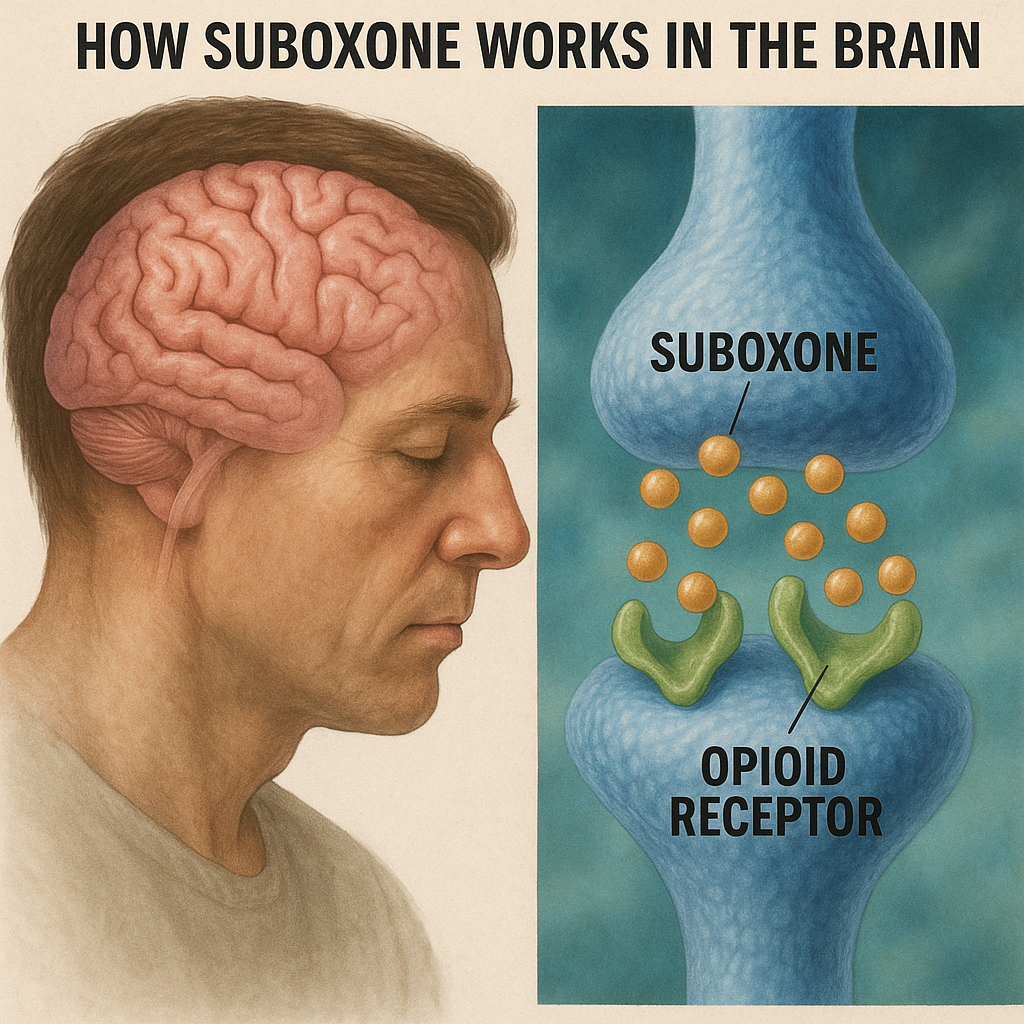
How long does Suboxone block opiates?
On average, Suboxone can block the effects of opiates for 24 to 72 hours per dose, depending on the amount taken and individual factors. Buprenorphine, the primary active ingredient, binds tightly to opioid receptors, making it difficult for other opioids to “take effect.” Higher doses of Suboxone can extend this blocking period, providing longer protection against opioid use.
The blocking effect of Suboxone does not necessarily end when withdrawal symptoms begin to subside. Even as the levels of Suboxone in the body decline, its ability to block other opioids can persist, offering continued protection against relapse and opioid misuse.
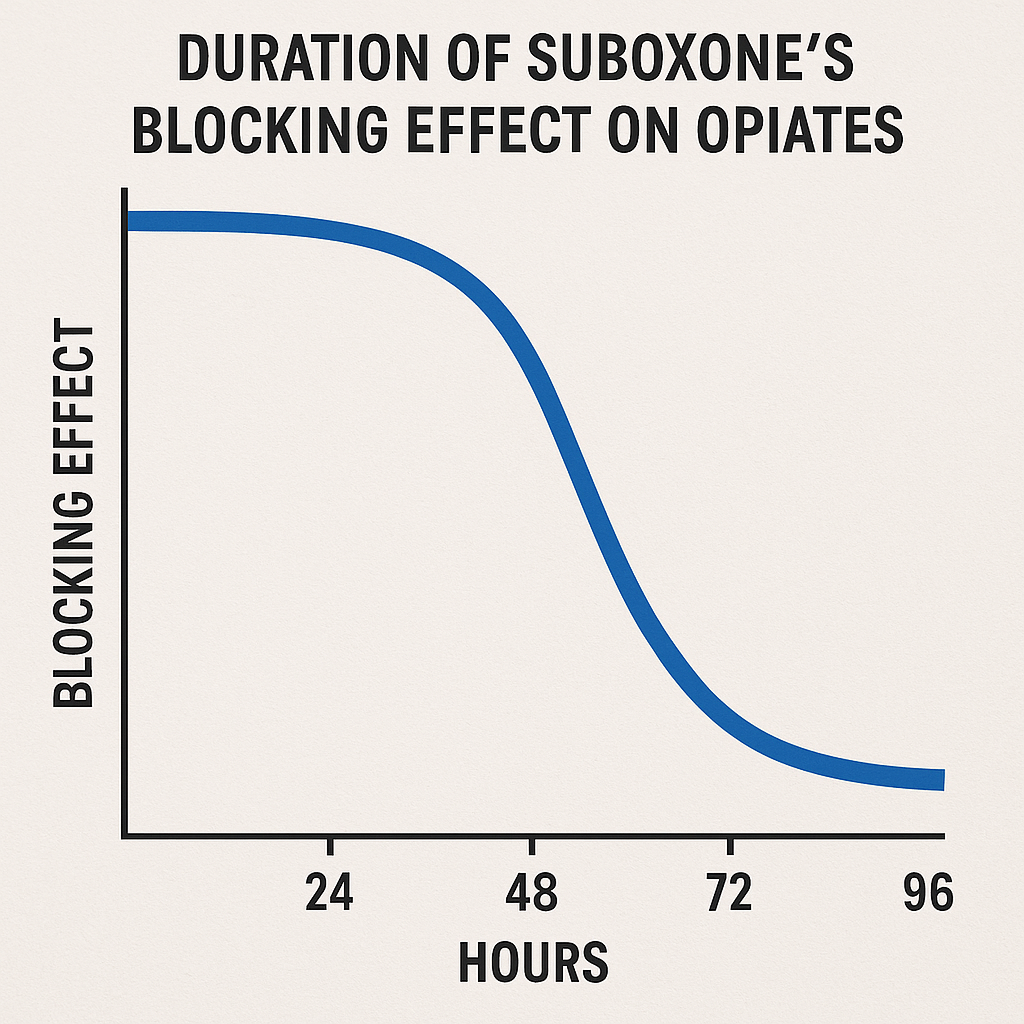
Factors that influence blocking duration
Several factors can influence how long Suboxone blocks opiates. Dosage strength and frequency play a significant role—higher doses generally result in longer blocking effects. Individual metabolism, including liver function, body weight, and genetics, can also impact the duration of Suboxone’s effects.
Additionally, the length of time many patients have been on Suboxone treatment can affect the blocking duration. Long-term users might experience different effects compared to those who are new to the medication.
Drug interactions with other medications can either speed up or slow down the clearance of Suboxone from the body, further influencing its blocking duration. Finally, a patient’s history of opioid use and tolerance levels can affect their subjective experience of Suboxone’s blocking effects.
How Suboxone blocks other opioids
Suboxone’s effectiveness in blocking other opioids is primarily due to:
- Buprenorphine’s high binding affinity and long half-life, which ranges from 24 to 42 hours.
- Buprenorphine binds strongly to the brain’s opioid receptors, preventing full opioid agonists like heroin and oxycodone from attaching to these receptors and producing their effects.
- High receptor occupancy by buprenorphine ensures that other opioids cannot easily displace it, effectively blocking their action.
One of the unique properties of buprenorphine is its ceiling effect, meaning that increasing the dose beyond a certain point does not enhance its opioid effects but rather prolongs the blocking duration. This feature makes it difficult, if not impossible, for individuals to override Suboxone’s effects by taking higher doses of other opioids, thus reducing the risk of misuse and overdose.
Blocking vs. withdrawal suppression
Distinguishing between Suboxone’s blocking effects and its ability to suppress opioid withdrawal symptoms is important. While the medication effectively blocks other opioids from binding to receptors, it also helps to manage withdrawal symptoms by providing a mild opioid effect to reduce withdrawal symptoms. However, the blocking effect can persist even after the subjective withdrawal symptoms have returned, due to the long half-life of buprenorphine.
A common misconception is that if a person begins to feel discomfort or withdrawal symptoms, Suboxone is no longer in their system. This is not necessarily true; the blocking effect can continue even as the medication levels decline. Understanding this distinction is essential for managing expectations and ensuring effective treatment.
Can you still feel other opioids while on Suboxone?
In most cases, the effects of other opioids are minimal or non-existent when Suboxone is taken as prescribed. Buprenorphine’s strong receptor occupancy means that it effectively blocks other opioids from producing suboxone’s effects. However, in situations where the dose of Suboxone is very low or a significant amount of time has passed since the last dose, some individuals might experience diminished effects from other opioids.
Attempting to override Suboxone by taking large amounts of other opioids can be extremely dangerous and often leads to overdose. The body’s tolerance to opioids can change rapidly, and the presence of Suboxone can mask the warning signs of overdose until it is too late. This reinforces the importance of adhering to prescribed dosages and following medical guidance.
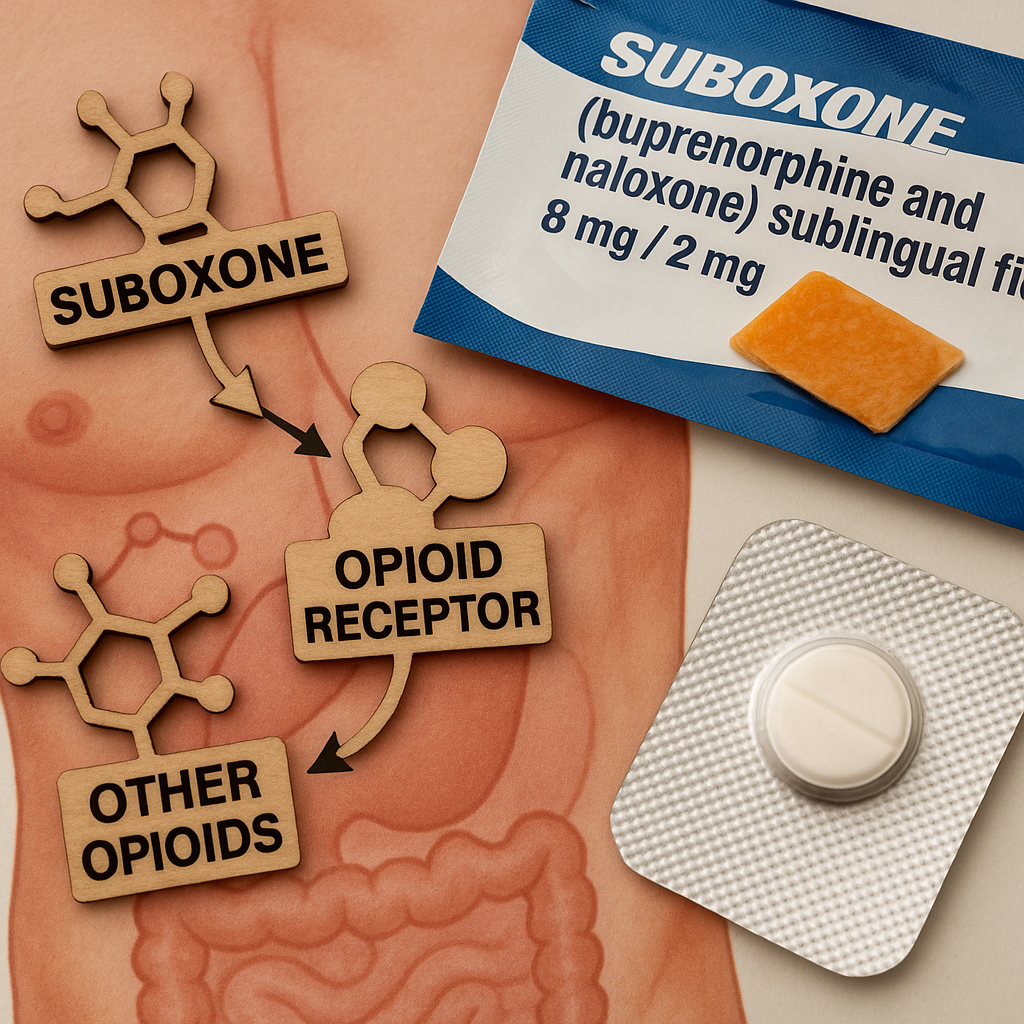
How long should you wait to take Suboxone after using opiates?
Starting Suboxone too soon after using opiates can trigger precipitated withdrawals, a rapid onset of severe withdrawal symptoms. General guidelines suggest waiting 12 to 24 hours after using short-acting opioids and at least 48 hours for long-acting opioids before taking Suboxone. This waiting period allows the body to begin clearing the opioids from the system, reducing the risk of adverse reactions.
Clinical oversight is crucial during this transition period. Healthcare providers often use tools like the Clinical Opiate Withdrawal Scale (COWS) to assess the appropriate timing for initiating Suboxone treatment. This ensures a safer and more effective start to the medication-assisted treatment process.
How long does Suboxone stay in your system?
The half-life of buprenorphine in Suboxone ranges from 24 to 42 hours, meaning it takes this amount of time for the concentration in the blood to reduce by half. The drug’s half-life is important for understanding how long it remains effective in the body. Detection times for Suboxone in the body can vary:
- In urine: up to 7 to 10 days
- In blood: up to 96 hours
- In saliva: up to 3 to 4 days
- In hair: up to 90 days
While Suboxone may be detectable in the body for an extended period, its blocking effects do not necessarily last as long. Understanding these timelines is essential for managing treatment and avoiding potential interactions with other medications or substances.
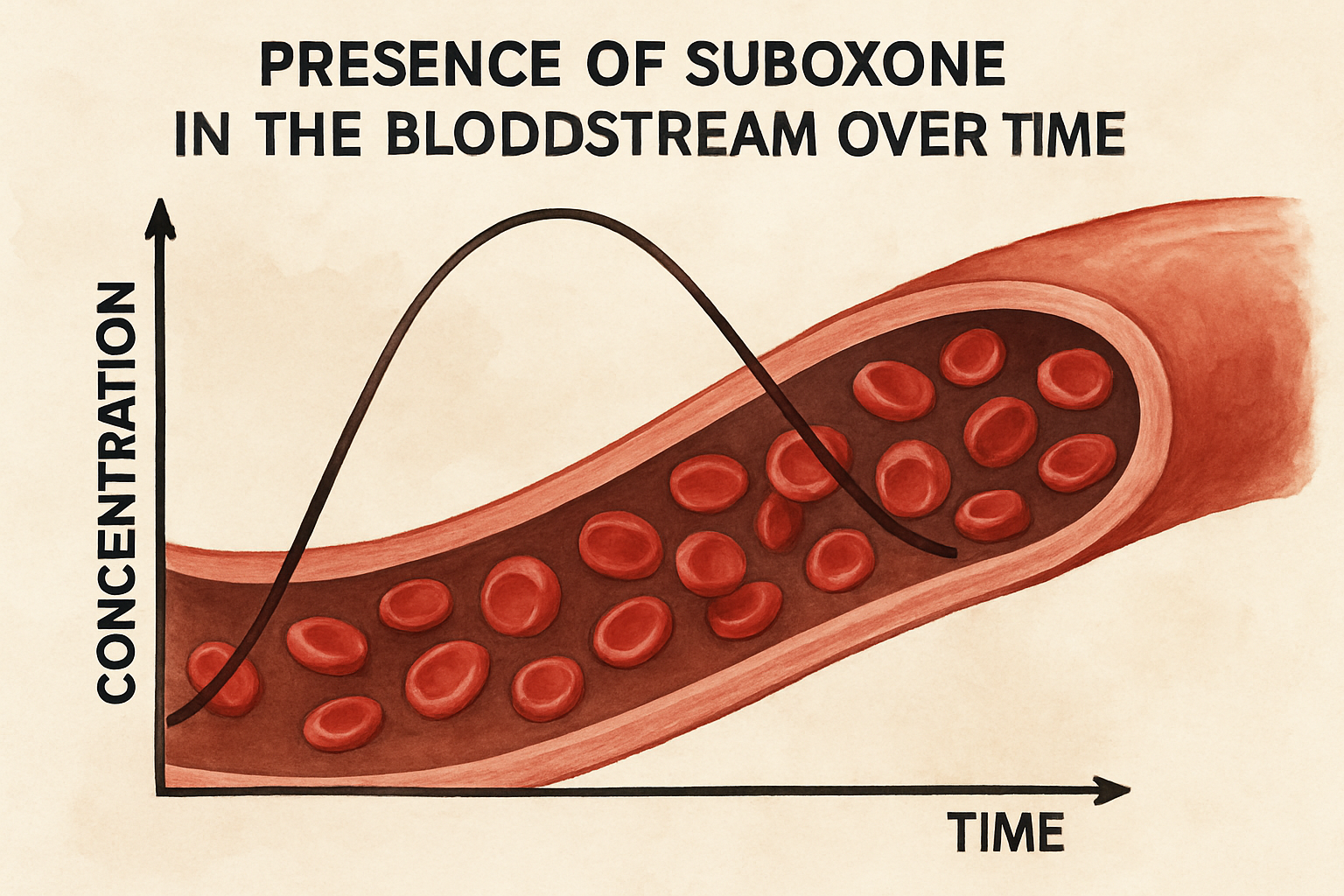
Medical guidance: Why duration matters in treatment planning
Understanding the duration of Suboxone’s blocking effects is critical for effective treatment planning. Tapering strategies, where the dose is gradually reduced over time, with a steady dose eventually tapering, can help prevent relapse and manage breakthrough cravings. Misuse or underdosing can lead to Suboxone addiction and undermine its benefits, making it essential to follow a carefully structured treatment plan.
Consulting with a medication-assisted treatment (MAT) provider is highly recommended before making any changes to the dose or schedule of Suboxone. Medical professionals can provide personalized guidance and monitor progress to ensure safe and effective treatment. This medication is highly beneficial collaboration is vital for achieving long-term recovery and minimizing the risks associated with opioid dependence.
Bottom Line: How long does Suboxone block opiates
Suboxone blocks opiates for 24 to 72 hours, depending on the dose and individual factors such as metabolism and treatment history. Its effectiveness in blocking other opioids is due to buprenorphine’s high receptor affinity and long half-life, which ensures strong receptor occupancy. Attempting to override Suboxone with other opioids is both unsafe and ineffective, highlighting the importance of adhering to prescribed treatments.
Knowledge of Suboxone’s blocking duration is essential for safe and effective recovery. This knowledge helps in preventing relapse, timing dose adjustments, and managing breakthrough cravings. This understanding fosters a more informed and proactive approach to opioid addiction treatment.
FAQs about Suboxone blocking opiates
How long does Suboxone block opiates?
Suboxone can effectively block opiates for 24 to 72 hours, influenced by the dosage and individual characteristics. This variability is essential to consider when determining its duration of action.
Can you feel the effects of other opioids while on Suboxone?
You will likely feel minimal or no effects from other opioids while on Suboxone, as it has a strong binding affinity at opioid receptors.
How long should you wait to take Suboxone after using opiates?
You should wait 12 to 24 hours after using short-acting opioids and at least 48 hours after using long-acting opioids before taking Suboxone to prevent precipitated withdrawal. This timing is crucial for your safety and comfort.
Does naloxone in Suboxone contribute to the blocking effect?
Naloxone in Suboxone does not contribute to the blocking effect; that effect arises from buprenorphine. Its primary function is to prevent misuse through injection.
Can Suboxone block fentanyl?
Suboxone can be an effective treatment for fentanyl addiction, though its blocking ability depends on the Suboxone dosage and fentanyl’s potency. It's essential to consider these factors when using Suboxone for opioid dependence.


